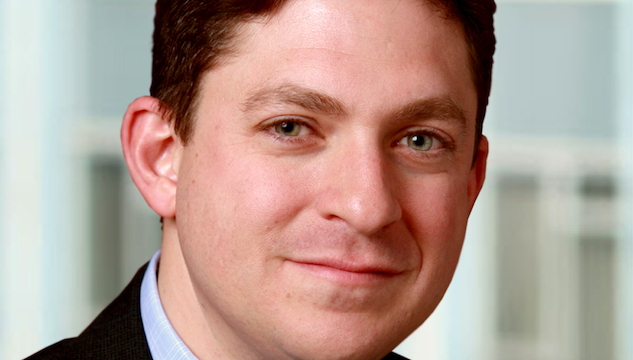The fund has outperformed all 25 SFC-registered technology-focused funds on a year-to-date, three-, five-, and 10-year basis, according to data from FE.
It is also the best performing fund in all four periods (with the exception of five years) out of the 48 funds available to accredited investors in Singapore.
|
Year-to-date (cumulative) |
Three years (annualised) | Five years (annualised) |
10 years (annualised) |
|
| JP Morgan US Technology Fund |
32.54 |
21.96 | 18.65 |
33.55 |
| TMT equity sector in Hong Kong |
19.3 |
12.81 | 13.62 |
26.65 |
| Technology sector in Singapore |
17.68 |
12.07 | 13.05 |
23.97 |
Source: FE Analytics
Part of the reason for the performance history is the product’s tilt toward “enterprise investments”, which account for at least 60% of the portfolio, according to Greg Tuorto, New York-based managing director for US equities and co-manager of the fund.
Enterprise investments are those companies that sell goods or services to other large companies, as opposed to consumer-focused companies, such as Apple or Netflix, he said.
For example, Salesforce.com (3% of the portfolio), is sold to big companies who pay subscription fees every year with a consistency that is more certain than consumer tech subscriptions, he told FSA in a recent visit to Hong Kong.
Tuorto noted that some of the holdings are not easily understood by retail investors and may be ignored.
One example is Synopsis, which account for 3.4% of the portfolio. The company is an electronic design automation company, with clients such as large semi-conductor makers Intel and Micron.
“One of the reasons why it’s not very popular is it’s a software company that’s doing business with really large behemoths,” he said.
Tuorto believes that these enterprise companies should benefit in the long-term as companies they sell to continue to improve digital infrastructure.
“Digital transformation has taken hold while productivity gains have been harder to come by. What companies are trying to do now is turn to technology to help them close the gap between the skills and the productivity needed to meet corporate strategic goals.
“That has made enterprise spending on technology a priority, and we find that spending on a piece of technology is not fickle and is consistent.”
That said, Tuorto still finds opportunities in other consumer-focused businesses, but noted that they should also share the same characteristics.
One example is PayPal, which is one of the fund’s top 10 holdings.
“PayPal has a high level of consumer exposure, but if you think of the level of what they are doing on the payment side of things, it’s really differentiated and that they are actually focused on what they can bring, which is an enterprise-quality payments infrastructure to a consumer.”
Top 10 holdings of the JP Morgan US Technology Fund
| Company |
% of assets |
| Alphabet |
3.6 |
| Synopsys |
3.4 |
| Microsoft |
3.2 |
| PayPal |
3.1 |
| Salesforce.com |
3 |
| Analog Devices |
2.9 |
| Xilinx |
2.7 |
| ServiceNow |
2.4 |
| Intuit |
2.4 |
| Palo Alto Networks |
2.1 |
Source: Fund factsheet
In total, the fund’s invests in around 60 companies. It also invests across company capitalisation, according to Tuorto.
|
JP Morgan fund |
Category average |
|
| Giant |
20.02 |
55.13 |
| Large |
38.49 |
13.59 |
| Mid |
33.24 |
19.85 |
| Small |
2.27 |
5.91 |
| Micro |
– |
1.25 |
Source: Morningstar Direct
Risks
The fund has a long-term investment horizon and therefore he looks for companies with firm commitments to R&D investment that is aimed at sustaining their competitive edge.
“Technology obsolescence is one risk. We don’t see it a lot in our space, but if you look at semiconductor companies that sit on the existing kind of product sets for a very long period of time, you worry about those guys.”
Tuorto is also cautious about investors crowding into a tech stock due to brand name.
“Investor crowding and popularity is something that we need to pay close attention to. Because there could be a mismatch of expectations on an earnings event, and we do not want to be involved in that.”
The fund manager also considers correlations of the stocks the fund invests in, especially since the product is focused on one industry.
“We need to get more mindful of the fact that it is a single-industry fund that we are managing. So when correlations are high, we also utilise different factors together with fundamental measures.”
Identifying future opportunities
Tuorto noted that he and his co-manager, Joseph Wilson, also spend time with companies that have not gone public to have a more in-depth understanding of the technology industry as well as identify future opportunities.
For example, Tuorto mentioned two holdings, software company Twilio and online ad company Trade Desk. His team met with management two years before they went public, he said.
He prefers high-quality companies, defined as businesses with high growth margins and, in his view, strong operating margins, management teams and free cash flow.
He also looks at the competitive landscape to see if a company is having a hard time differentiating itself.
“We can look at the kind of marketing spend as a percentage of revenue, or how much money they are spending to send their message across.
“Because if it is really high, then maybe they are in a space that is a bit too crowded.”
JP Morgan US Technology fund versus the Russell 1000 Index and the TMT sector, 3 years


















